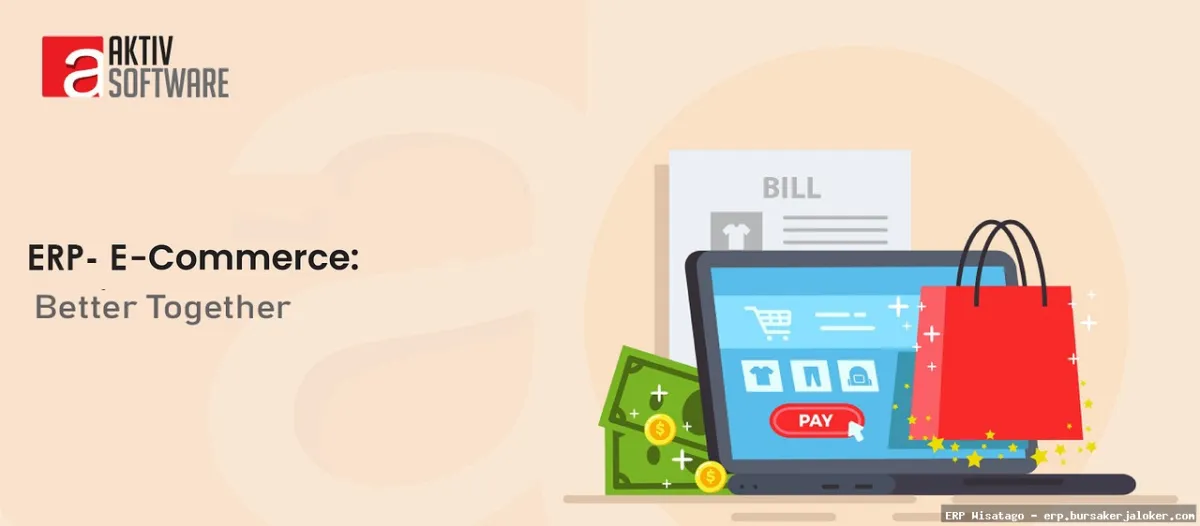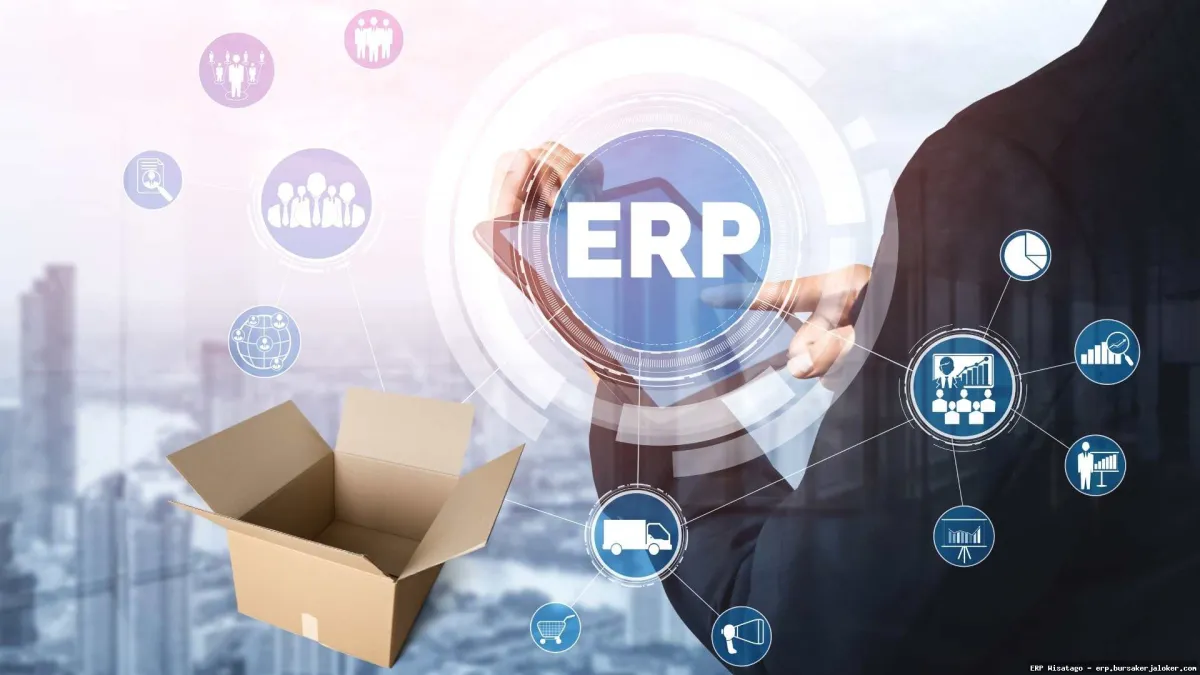In the fast-paced world of eCommerce, success hinges on efficiency, accuracy, and the ability to adapt quickly to changing market demands. As a business grows, spreadsheets and disparate software solutions often become inadequate, leading to data silos, errors, and ultimately, lost revenue. That’s where Enterprise Resource Planning (ERP) systems come into play. ERP isn’t just for large corporations anymore; it’s a powerful tool that can transform the way eCommerce businesses of all sizes operate, streamlining processes, improving decision-making, and driving growth. Think of it as the central nervous system of your business, connecting all your departments and providing a single source of truth for all your critical data.
Having worked with ERP implementations for several years, I’ve witnessed firsthand the profound impact it can have on an eCommerce business. From initial hesitation and the inevitable growing pains of implementation to the long-term benefits of improved inventory management, order fulfillment, and customer satisfaction, the journey can be transformative. However, choosing the right ERP system and implementing it effectively is crucial. A poorly chosen or implemented ERP can be a costly and disruptive mistake.

This article provides a complete guide to ERP for eCommerce businesses, covering everything from the basic definition and core features to the benefits, challenges, and key considerations for selecting and implementing the right solution. We’ll delve into real-world examples, common pitfalls to avoid, and practical advice to help you make informed decisions and maximize the return on your ERP investment. Whether you’re just starting to explore ERP or looking to upgrade your existing system, this guide will provide you with the knowledge and insights you need to succeed.
What is ERP for eCommerce?
At its core, ERP is an integrated software system that manages and automates various business processes. For an eCommerce business, this typically includes:
- Inventory Management: Tracking stock levels, managing warehouse locations, and optimizing inventory flow.
- Order Management: Processing orders, managing order fulfillment, and tracking shipments.
- Customer Relationship Management (CRM): Managing customer data, tracking interactions, and providing personalized service.
- Financial Management: Handling accounting, budgeting, and financial reporting.
- Supply Chain Management (SCM): Managing relationships with suppliers, tracking shipments, and optimizing the supply chain.
- Manufacturing (if applicable): Managing production processes, tracking costs, and ensuring quality control.
An eCommerce ERP system integrates these functions into a single, unified platform, eliminating data silos and providing a comprehensive view of the entire business. This integration allows for better data accuracy, improved efficiency, and more informed decision-making.
Key Differences Between a General ERP and an eCommerce ERP
While general ERP systems offer broad functionalities, eCommerce ERPs are specifically tailored to the unique needs of online retailers. Some key differences include:
- Integration with eCommerce Platforms: eCommerce ERPs seamlessly integrate with popular platforms like Shopify, Magento, WooCommerce, and others. This allows for automatic synchronization of product information, order data, and customer details.
- Multi-Channel Management: eCommerce businesses often sell through multiple channels, including their own website, marketplaces like Amazon and eBay, and social media platforms. An eCommerce ERP provides tools for managing inventory, orders, and customer data across all these channels.
- Shipping and Fulfillment: eCommerce ERPs typically include features for managing shipping logistics, generating shipping labels, and tracking shipments. They may also integrate with shipping carriers like UPS, FedEx, and USPS.
- Returns Management: Handling returns is a critical part of the eCommerce experience. An eCommerce ERP provides tools for managing returns, processing refunds, and restocking inventory.
- Real-time Inventory Visibility: Crucial for preventing overselling and ensuring customer satisfaction. eCommerce ERPs provide real-time visibility into inventory levels across all locations and channels.
Benefits of Implementing an ERP System for Your eCommerce Business
Implementing an ERP system can bring significant benefits to your eCommerce business. Here are some of the most important advantages:
Improved Efficiency and Productivity
By automating manual tasks, streamlining workflows, and eliminating data silos, an ERP system can significantly improve efficiency and productivity. For example, order processing can be automated from order placement to shipment, reducing the need for manual intervention and freeing up staff to focus on more strategic tasks.
Better Inventory Management
Accurate inventory management is crucial for eCommerce success. An ERP system provides real-time visibility into inventory levels, allowing you to optimize stock levels, prevent stockouts, and reduce carrying costs. Features like demand forecasting and automated reordering can further improve inventory management.
Enhanced Customer Experience
An ERP system can help you provide a better customer experience by providing accurate order information, tracking shipments, and offering personalized service. Integration with CRM modules allows you to access customer data, track interactions, and provide targeted marketing campaigns.
Streamlined Order Fulfillment
Efficient order fulfillment is essential for customer satisfaction. An ERP system can streamline the order fulfillment process, from order placement to shipment, ensuring that orders are processed quickly and accurately. Features like warehouse management and shipping integration can further improve order fulfillment.
Data-Driven Decision Making
An ERP system provides a wealth of data that can be used to make informed business decisions. Real-time reports and dashboards provide insights into key performance indicators (KPIs) such as sales, inventory levels, and customer satisfaction. This data can be used to identify trends, optimize processes, and improve profitability.
Reduced Costs
While implementing an ERP system requires an initial investment, it can ultimately lead to significant cost savings. By improving efficiency, reducing errors, and optimizing inventory management, an ERP system can help you reduce operational costs and improve your bottom line.
Key Features to Look for in an eCommerce ERP
When selecting an ERP system for your eCommerce business, it’s important to consider the specific features that are most important to your needs. Here are some key features to look for:
eCommerce Platform Integration
Seamless integration with your existing eCommerce platform (e.g., Shopify, Magento, WooCommerce) is crucial. This allows for automatic synchronization of product information, order data, and customer details.
Inventory Management
Look for features like real-time inventory tracking, demand forecasting, automated reordering, and multi-warehouse management.
Order Management
Features like automated order processing, order tracking, and shipping integration are essential for efficient order fulfillment.
CRM Integration
Integration with a CRM module allows you to manage customer data, track interactions, and provide personalized service.

Financial Management
Look for features like accounting, budgeting, and financial reporting.
Supply Chain Management
Features like supplier management, purchase order management, and shipment tracking can help you optimize your supply chain.
Reporting and Analytics
Real-time reports and dashboards provide insights into key performance indicators (KPIs) and help you make informed business decisions.
Mobile Accessibility
Mobile accessibility allows you to access your ERP system from anywhere, at any time, using a smartphone or tablet.
Challenges of ERP Implementation
Implementing an ERP system is a complex project that can present several challenges. Being aware of these challenges and planning for them can significantly increase your chances of success.
High Implementation Costs
ERP implementation can be expensive, involving software licenses, implementation services, training, and ongoing maintenance. It’s important to carefully budget for all these costs and to consider the long-term return on investment (ROI).
Complex Implementation Process
Implementing an ERP system is a complex process that requires careful planning, execution, and monitoring. It’s important to have a dedicated project team and to follow a structured implementation methodology.
Resistance to Change
Implementing an ERP system can require significant changes to existing business processes. This can lead to resistance from employees who are used to the old ways of doing things. It’s important to communicate the benefits of the new system and to provide adequate training to help employees adapt.
Data Migration
Migrating data from legacy systems to the new ERP system can be a challenging and time-consuming process. It’s important to ensure that the data is accurate and complete and that it is properly mapped to the new system.
Training and Support
Proper training and support are essential for ensuring that employees can effectively use the new ERP system. It’s important to provide comprehensive training and to have ongoing support available to answer questions and resolve issues.
Choosing the Right ERP System for Your eCommerce Business
Selecting the right ERP system is a critical decision that can significantly impact your business. Here are some key considerations to keep in mind:
Define Your Business Requirements
Before you start evaluating ERP systems, it’s important to clearly define your business requirements. What are your biggest pain points? What are your goals for the new system? What features are most important to you? By clearly defining your requirements, you can narrow down your options and choose a system that is a good fit for your needs.
Evaluate Different ERP Vendors
There are many ERP vendors to choose from, each with its own strengths and weaknesses. It’s important to carefully evaluate different vendors and to compare their products based on your specific requirements. Consider factors like functionality, cost, ease of use, and vendor reputation.
Consider Cloud vs. On-Premise ERP
You’ll need to decide whether to deploy your ERP system in the cloud or on-premise. Cloud-based ERP systems are typically more affordable and easier to implement, while on-premise systems offer more control and customization. For more information, you can refer to RMM as an additional resource.
Check References and Reviews
Before making a final decision, be sure to check references and reviews from other eCommerce businesses that have used the ERP system you’re considering. This can provide valuable insights into the system’s strengths and weaknesses and the vendor’s level of support.
Get a Demo
Request a demo of the ERP system to see how it works in practice. This will give you a better understanding of the system’s features and usability and help you determine if it’s a good fit for your business.

Tips for a Successful ERP Implementation
Here are some tips for ensuring a successful ERP implementation:
- Plan Carefully: Develop a detailed implementation plan that outlines the project scope, timeline, budget, and resources.
- Assemble a Dedicated Team: Assemble a dedicated project team with representatives from all key departments.
- Communicate Effectively: Communicate regularly with all stakeholders throughout the implementation process.
- Provide Adequate Training: Provide comprehensive training to all employees who will be using the new system.
- Test Thoroughly: Test the system thoroughly before going live to ensure that it is working as expected.
- Monitor Performance: Monitor the system’s performance after going live and make adjustments as needed.
Conclusion
Implementing an ERP system is a significant investment for any eCommerce business, but it can also be a transformative one. By streamlining processes, improving efficiency, and providing valuable insights, an ERP system can help you grow your business and stay competitive in today’s fast-paced market. By carefully planning your implementation, choosing the right system, and addressing potential challenges, you can maximize the return on your investment and unlock the full potential of your eCommerce business.
Frequently Asked Questions (FAQ) about ERP for eCommerce business
What are the key benefits of implementing an ERP system for a growing eCommerce business, and how does it differ from using multiple standalone software solutions?
Implementing an ERP (Enterprise Resource Planning) system offers numerous benefits for a growing eCommerce business. Primarily, it provides a centralized platform that integrates various business processes like inventory management, order processing, accounting, and customer relationship management (CRM). This integration eliminates data silos and streamlines workflows, leading to improved efficiency and accuracy. Unlike using multiple standalone software solutions, which often require manual data transfer and can result in errors, an ERP system provides a unified view of your business operations. This allows for better decision-making, improved inventory control, reduced operational costs, and enhanced customer satisfaction. Furthermore, a robust ERP system can automate tasks, scale with your business growth, and provide real-time insights into performance metrics.
How much does it typically cost to implement an ERP system for an eCommerce company, and what factors influence the overall implementation cost?
The cost of implementing an ERP system for an eCommerce company can vary significantly, ranging from a few thousand to hundreds of thousands of dollars. The actual cost depends on several factors. These include the size and complexity of your business, the specific modules you need (e.g., inventory, accounting, CRM), the type of ERP system (cloud-based vs. on-premise), the level of customization required, and the implementation partner you choose. Cloud-based ERP solutions generally have lower upfront costs but involve ongoing subscription fees. On-premise solutions require a larger initial investment in hardware and software licenses but may offer greater control over your data. Other costs include data migration, training, and ongoing maintenance and support. Thoroughly assessing your business needs and obtaining quotes from multiple vendors is crucial for accurately estimating the total implementation cost. Remember to factor in the long-term return on investment (ROI) from increased efficiency and reduced costs.
What are the essential features to look for in an ERP system specifically designed for eCommerce businesses, and how do these features help streamline online sales operations?
When selecting an ERP system for your eCommerce business, several essential features can significantly streamline online sales operations. Key features include inventory management (real-time tracking, automated replenishment), order management (efficient order processing, shipping integration), customer relationship management (CRM) (customer data management, personalized marketing), accounting and finance (automated financial reporting, payment processing), and eCommerce platform integration (seamless synchronization of product data, orders, and customer information). Look for features like automated shipping label generation, integration with popular payment gateways, multi-channel support (e.g., Amazon, eBay), and robust reporting capabilities. These features ensure accurate inventory levels, faster order fulfillment, improved customer service, and better financial visibility. By automating key processes and providing a unified view of your eCommerce operations, a well-chosen ERP system can help you scale your business and improve profitability.
